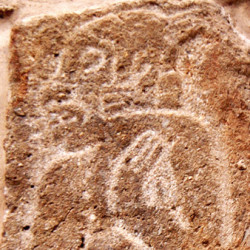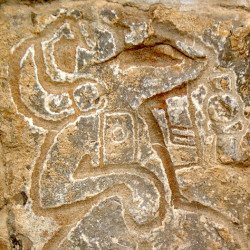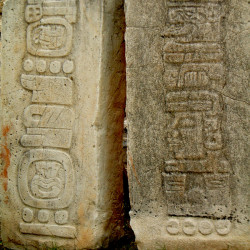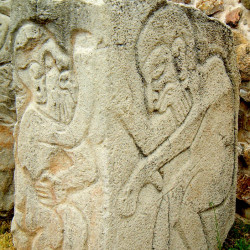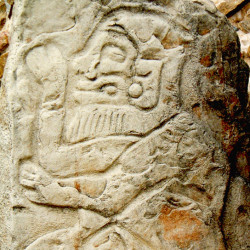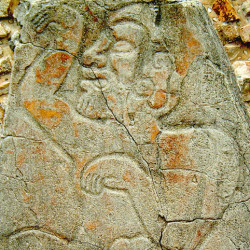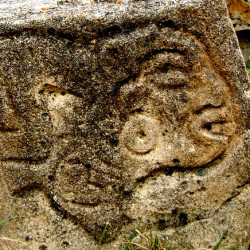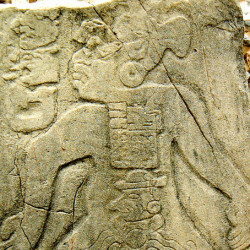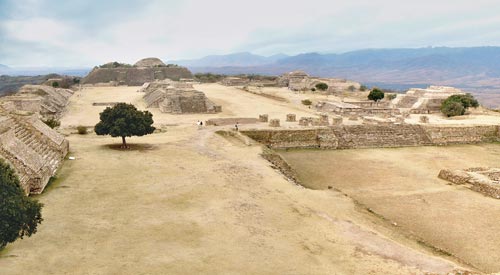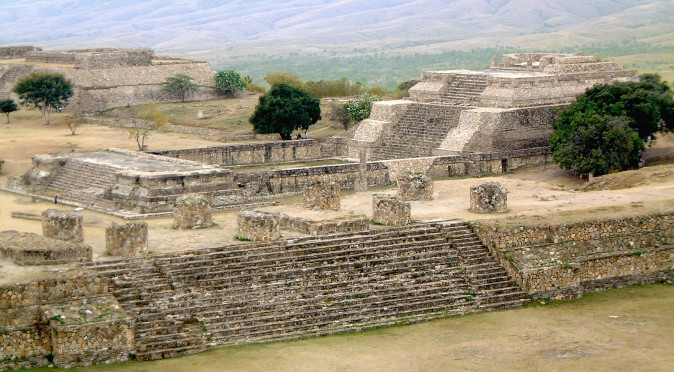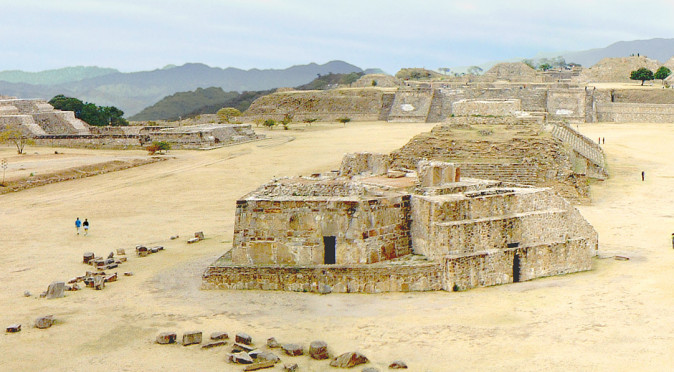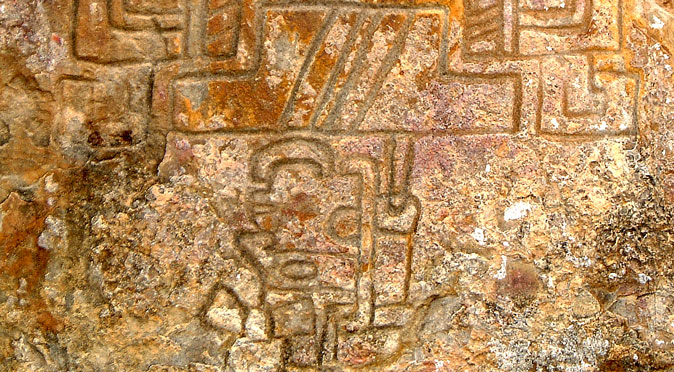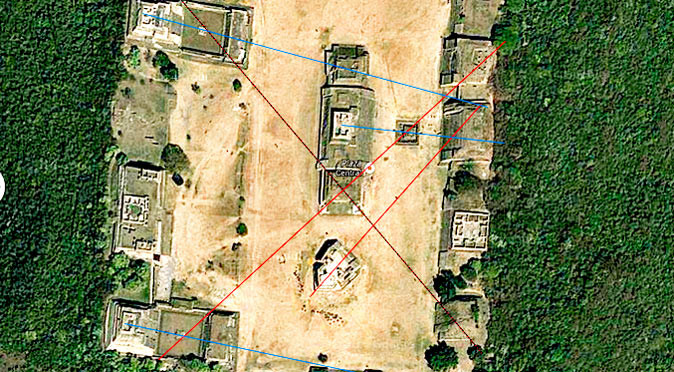“Los Danzantes” is the name given to a collection of more than 300 bas-reliefs at Monte Albán which feature rubbery, limp and disfigured human figures. The name “Los Danzantes” translates to “The Dancers” in reference to the playful nature of the images. Their message, or purpose, is probably going to remain a mystery, for the vast majority of the Danzantes hold no clues to indicate who or what they represent nor when or by whom they were created. The few that do have glyphs cannot yet be deciphered, whilst others contain mysterious imagery around the genitalia or foreign features such as beards that only further confuse the message they were designed to tell. The majority of the images on display in the city are freestanding slabs which stand like gravestones between Building L and System M.
Fig. 0278 – Danzante Relief
Fig. 0277 – The Dancer Danzante
Fig. 0276 – Stelae 12 & 13
Fig. 0271 – Danzante of Bearded Men
Bearded Man from Monte Alban
Danzante of a Bearded Man
Fig. 0274 – Anthropomorphic Danzante
Fig 0276 – Danzante of a Pregnant Woman
The most popular theory is that they represent slain captives. Whilst there is imagery of death, there is little else to support this theory – and this lack of clues suggest the theory is wrong. Records of victorious conquests were typically designed to glorify the victors and normally leave little doubt as to who they were and who they defeated. The Danzantes, however, only record a deformed or limp body, with no identification of who they are or how they died – in fact, we can’t even be sure they are dead. Also, the presence of women and the strange imagery around the genitalia suggest they record something a little more unusual. As the Danzantes were designed as free standing slabs, there is even a chance that these monuments were brought here and possibly weren’t even created by the Zapotec.
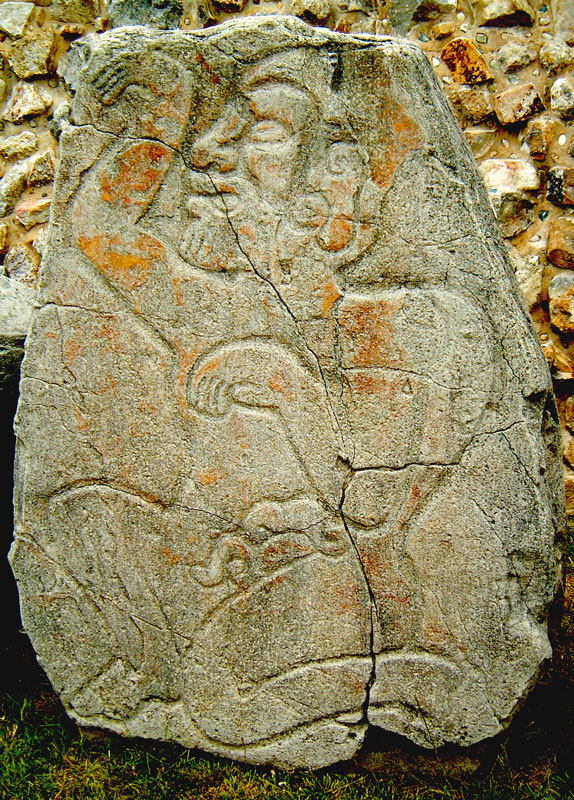
Fig. 0273 – Danzante of a Bearded ManThe rubbery bulbous style is synonymous with the Olmec Civilisation who flourished in the coastal region 300km northeast of the Oaxaca Valley until they suddenly vanished in around 500BCE. Their artwork is often perceived to be a stylised interpretation of fictitious and imaginary characters in an effort to explain the profound images they created of overseas cultures from Europe, the Far East and Africa – including the use of beards and the bizarre “Olmec heads”. We can see from figs 0271, 0272, and 0273, that the Danzantes include bearded images which, along with the rubbery stylised form, is strong evidence of an Olmec influence.
The Olmecs were the primigenial civilisation of Mesoamerica and started building monumental structures and religious sanctuaries from 1500BCE, whilst the rest of Mesoamerican population was still developing as hunter/gatherer tribes. The lack of outside influence and competition meant they had time to develop their abstract ideas and artwork. They were keen to inspire and influence the tribal groups they found through trade and migration and the Oaxaca Valley was very close by. One particular settlement, at San Jose Mogote, seems to have had extensive trade with the Olmec through specialist magnetite mirrors that they made. This successful trade, and the Olmec influence, catapulted them from a small riverside farming community to building monumental structures, inventing the first known form of writing in Mesoamerica and forming the Zapotec Civilisation.
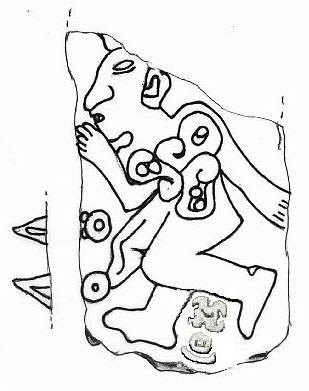
Fig. SJMM3 – Monument 3, San Jose MogoteThis first form of writing is found on a “Danzante” known as Monument 3, which was found between buildings 14 and 17 at San Jose Mogote, less than 20km from Monte Alban. It was found in situ as a paving slab in a corridor, which has led to a theory that it depicts a slain enemy and was designed for people to walk over in disrespect. The writing, which consists of two glyphs between the legs, is thought to read “Earthquake” (or “Motion”) and “One” (it is the symbol for the first day of a 20-day cycle – which makes it the earliest known use of calendrics). Buildings 14 and 17 have been dated between 750BCE , when monumental building began, and 500BCE, when San Jose Mogote slipped rapidly into decline. This would make Monument 3 considerably older than the Danzantes at Monte Albán.
Looking at the Danzantes, it is most likely that they symbolise death, because the eyes are closed and they closely resemble lifelessly limp, tangled and contorted corpses. For reasons stated earlier, this doesn’t mean these are defeated enemies, but the only other people who were honoured with stone effigies are heroes and they wouldn’t be pictured nude, deformed and slumped in agonising death. With more than 300 anonymous gravestones of sickly looking humans, it would make more sense if they represented an epidemic.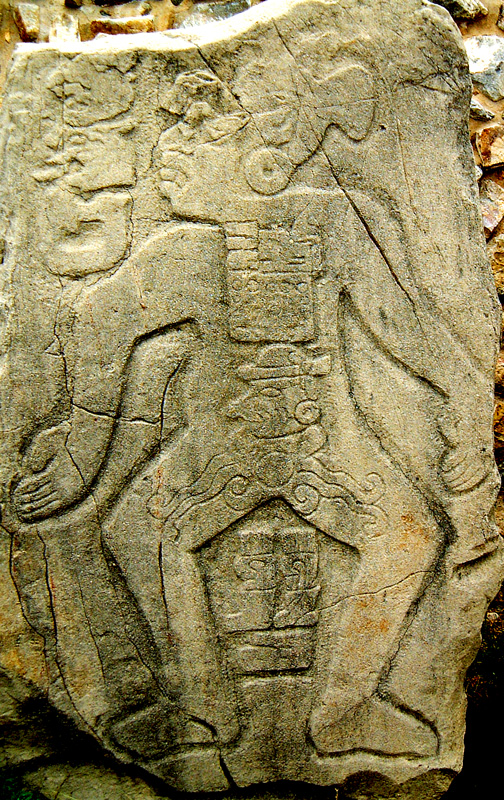
Fig 0276 – Danzante of a Pregnant Woman Looking at one of the most famous of the Danzantes in fig. 0276, there are a number of clues that suggest disease might be the subject, rather than trophies of war.Firstly, it’s a woman; secondly, she has some sort of deformity around the genital area; thirdly, there is a curious image in the womb of a man who wears a hat and earring, which is most likely meant to symbolise that someone important died in her womb.
Epidemics, such as plagues, often come from nowhere and disappear without trace, leaving behind a decimated population, empty towns and abandoned villages. Looking back at the evidence so far discussed, we have the Olmec civilisation disappearing in around 500BC, the town of San Jose Mogote going into decline in around 500BC, and we have the foundation of Monte Albán in around 500BC. This points to a catastrophic epidemic which spread along the trade routes, decimating the Olmec civilisation and prompting the population of the Oaxaca Valley to evacuate the valley floor and seek shelter on an isolated hilltop. Monument 3 at San Jose Mogote may have been a warning that beyond that stone lay a sanctuary for the sick and diseased and Monte Albán may have been built as a sanctuary from the disease high above the valley floor. In which case, the Danzantes may have been erected to commemorate the various tribes or important personages who were destroyed by the disease and to forewarn future generations. If the imagery is of disease, then it would also explain the symbolism around the hip of fig. 0273, as well as other defects found on Danzantes not pictured here.
There is growing evidence that epidemic diseases may be brought to earth via meteors1. These unknown diseases then rage through the population until either the conditions of the earth cause it to mutate into an ineffective germ, or the only humans remaining are those immune to it – hence it dies out and never returns. It is theorised that a comet traveling through the Earth’s orbit could deposit diseases within its tail, which could then be pulled to Earth as we travel through its wake. The glyphs on Monument 3 at San Jose Mogote, which are said to read “Earthquake” or “Motion” and (day) “One”, could be a reference to the event that triggered the disaster – the tremors caused by a meteoric impact or a record of a celestial motion (a passing comet). Looking at fig. SJMM3, there are two circles on the left edge which have trails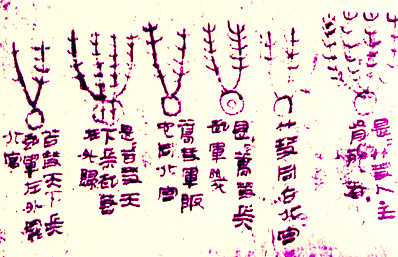
Fig. MSC1 – Excerpt from a Mawangdui Silk leading down the side of the slab that look very much like comets. If this is a record of the celestial event responsible for the epidemic, then it is not the only one from ancient times. The Mawangdui Silks (fig. MSC1) record 29 sightings of comets which immediately preceded the onset of epidemics. The silks were made in China, date from around 300BCE and are a scientific record of the relationship between comets and subsequent epidemic diseases as witnessed over more than a millennia. They catalogue sightings dating back as far as 1500BCE and describe the illnesses that hit shortly after.
The other common way for epidemic diseases to be transferred is via foreigners from another continent, which is exactly what happened when the Spanish arrived two thousand years later and brought small-pox with them. This disease obliterated the indigenous population and led to their easy victory. The Danzantes themselves hint at the presence of foreign bodies with images of bearded men, so the idea of Europeans landing on the Gulf coast and infecting the Olmec can not be discounted.
As stated at the beginning, the Danzantes are a mystery that will probably remain unsolved, but this is an alternative theory that may better explain the evidence so far uncovered.
References:
1 – http://www.sott.net/article/228189-New-Light-on-the-Black-Death-The-Viral-and-Cosmic-Connection

